Vol. 8, Issue 1, pp: (79-85), Month: April 2020 - September 2020, Available at: www.researchpublish.com
Size and Composition Distribution of Atmospheric Particles at Shanxi Normal University (SXNU) campus site in Linfen, China
1Institute of Modern Physics, Shanxi Normal University,Linfen 041004, P. R. China
2School of Life Science, Shanxi Normal University, Linfen 041004, P. R. China *arash@sxnu.edu.cn
Abstract: To the best of our knowledge, no measurements of airborne particles have previously been carried out in the city of Linfen, Shanxi Province, China.
Size-resolved aerosol mass and elemental compositions were measured in the urban background environment during the LinfenAir Quality Study.
Weekly samples were collected for three months from October 2019 to December 2019. A Tisch Ambient EightStage Cascade Impactor was used to collect aerosol samples of fine particulate matters smaller than 10 µm; also, a 400 mesh hexagonal Agar SEM grid was used to sample particles to carry out SEM analyses. Approximately 78% of samples contain aerosol particles below 7 µm, which means the aerosol particles are respirable. Approximately 25% of samples contain aerosol particles below 2 µm, which means the aerosol particles can reach the alveoli of the lung. These are harmful to human health if they consist of dangerous particulate matters. SEM analyses show the following elements which are presented in the particulate matter of Linfen urban air: Mg (MgO), Al (Al2O3), Si (SiO2), S (FeS2), K, Ca, Cu, Fe, Ag, and Ti. Our study cannot verify whether these elements are hazardous in Lifen’s aerosol.
Keywords: Trace metals; SEM;Atmosphere aerosol particles; Human health;Air Pollution;Air Quality.
1. INTRODUCTION
There has been broad interest in research on aerosol particles, particularly because of the risk to the health of the earth’s population and ecosystems that it represents. Aerosol particles are solid or liquid particles suspended in the atmosphere from 0.1 to 10 µm in diameter (1). Although the mass of aerosols in the atmosphere accounts for only one billionth of the total atmospheric mass, it has an important impact on the global energy and moisture cycle and many physical and chemical processes in the atmosphere (2-3). The elemental composition, morphological and thermodynamic properties of aerosol particles vary with the geographical area and with the season of the year. The distribution of Linfen’s topographic outline is generally "concave" type, surrounded by mountains; the middle is plain. Located in the Fen River Valley, Linfen is one of the China's major high-quality main coking coal bases. The locals maintain the coal-based energy structure in the long term. Under the influence of the valley terrain, the average annual wind speed is small; the static wind frequency is high, which is not conducive to the spread of atmospheric pollutants. The difficulty of improving air quality in Linfen is increasing year by year and there is greater uncertainty. The results show that the air quality in Linfen is at the moderate pollution level, but the pollution level becomes serious in winter. The pollution level is different in different seasons, so we should strengthen governance. Therefore, it is of scientific significance to study the atmospheric pollution of Linfen from the perspective of aerosol particles.
International Journal of Healthcare Sciences ISSN 2348-5728 (Online)
Vol. 8, Issue 1, pp: (79-85), Month: April 2020 - September 2020, Available at: www.researchpublish.com
2. SITE DESCRIPTIONS
Linfen is a city located in the southwest of Shanxi Province. The total urban area is 20,275 km² and the population is 4.4815 million. It is surrounded by Taiyue Mountain, Zhongtiao Mountain and Lvliang Mountain; the center of the city is a flatland. Fen River, via a man-made channel, runs across the city. The nutrient content of soil in Linfen is abundant, and the soil is widely brown earth. In the area of semi-arid and semi-humid monsoon zone, the feature climate of Linfen is windy and dry in spring, hot and rainy in summer, and cold with little snow in winter. The annual average temperature is 12.9 ℃ and the average rainfall is 420 - 550 mm. The mineral and biology resources in Linfen are also rich. The air pollution is very severe; as Linfen has been considered the most polluted city of China for many years because of the location and the unreasonable industrial structure (see Fig.1).
Figure 1: Sampling site at the south gate of the SXNU is marked with a black point. In the upper left picture, the location of Linfen is shown in China (4).

International Journal of Healthcare Sciences ISSN 2348-5728 (Online)
Vol. 8, Issue 1, pp: (79-85), Month: April 2020 - September 2020, Available at: www.researchpublish.com
3. EXPERIMENTALMETHODS
3.1. Sampling
The sampling device is used as a substitute for the respiratory tract as a dust collector. As such, it should reproduce to a reasonable degree the dust collecting characteristics of the human respiratory system so that lung penetration by aerosol can be predicted from sampling data. The sampling instrument should therefore classify the particles collected according to the aerodynamic dimension which is the true measure of lung penetrability.
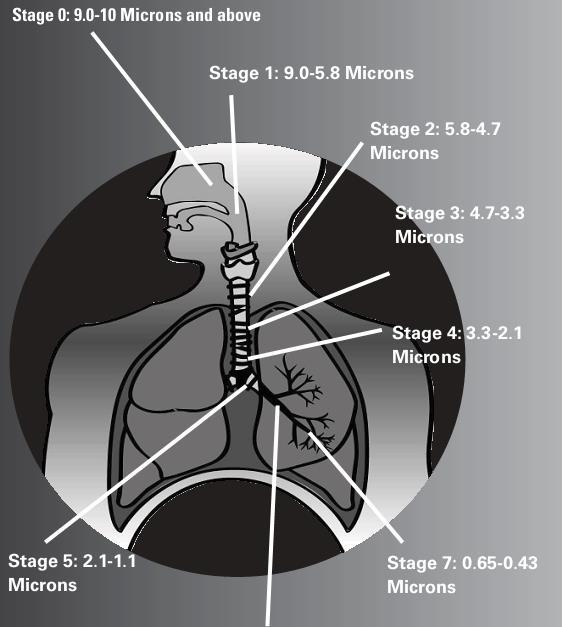
Based on these facts we have chosen the Andersen Eight-Stage Cascade Impactor (ACI) for our experiment.
The aerodynamic cut-off diameters (ECD) for the impactor are 0, 0.4, 0.7, 1.1, 2.1, 3.3, 4.7, 5.8, 9.0 and 10 µm. This will simulate lung filtration. To perform this experiment, we can directly observe to where aerosols of different sizes reach the lungs (as shown in fig. 2). The open centers go in the top two stages and the solid centers go in the remaining stages. However, before we start the experiment, we should check the air we will test using 28.3 rate of flow in our experiment. When we change the flow, we will get an accurate answer, but we need to judge according to the specific situation. An experiment usually lasts for four hours. There are four hours for running the equipment and half an hour for chilling it. Aerosols are collected on glass fiber filters and copper grids.
International Journal of Healthcare Sciences ISSN 2348-5728 (Online)
Vol. 8, Issue 1, pp: (79-85), Month: April 2020 - September 2020, Available at: www.researchpublish.com
3.2 Filters analysis
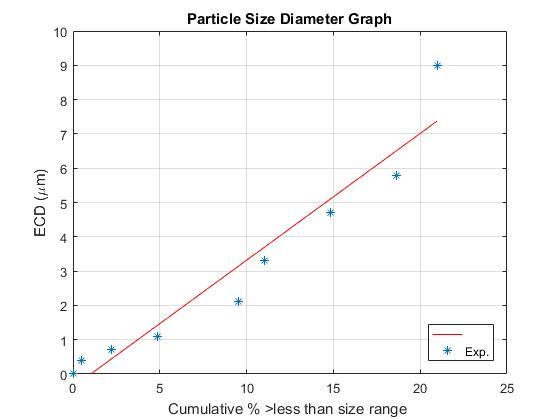
Figure 3: Aerodynamic particle size impaction graph. The red line is to guide the eye.
From Fig. 3, it can be seen that approximately 78% of sample is respirable (below 7 µm) according to the American Council of Governmental Industrial Hygienists (ACGIH). It is clear from Fig. 3 that approximately 25% of the sample can reach alveoli of the lung because their size is below 2 µm.
Figure 4: Aerodynamic particle size impaction graph. The red line is to guide the eye.

From Fig. 4, it can be seen that approximately 19% of the sample is respirable. It is clear from Fig. 2 that approximately 8% of the sample can reach alveoli of the lung because their size is below 2 µm.
The lung and the respiratory system is one of the largest interfaces between us and the environment (80-100 m2), and exposure through this interface is one of the main routes of many hazards (5).
International Journal of Healthcare Sciences ISSN 2348-5728 (Online)
Vol. 8, Issue 1, pp: (79-85), Month: April 2020 - September 2020, Available at: www.researchpublish.com
3.3. SEM–EDS analysis
Single-particle analysis was performed using a JOEL Field Emitter Scan Electron Microscope. This instrument is equipped with an Oxford 6853 energy dispersive spectroscopic detector, and is run by Oxford Instruments INCA Energy and feature software.
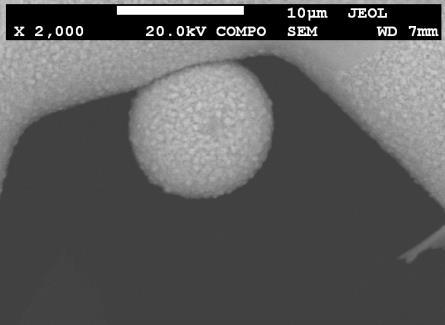
Fig. 5 shows some examples of SEM photomicrographs of airborne particles that have been collected on a SEM copper grid. A B C D F G H
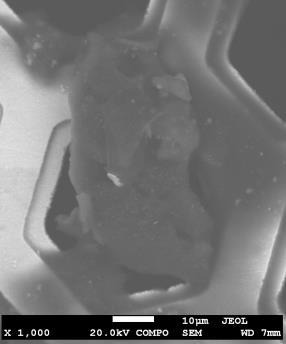
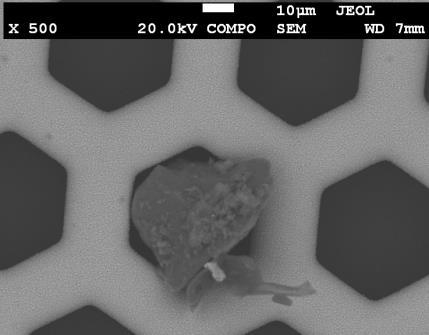
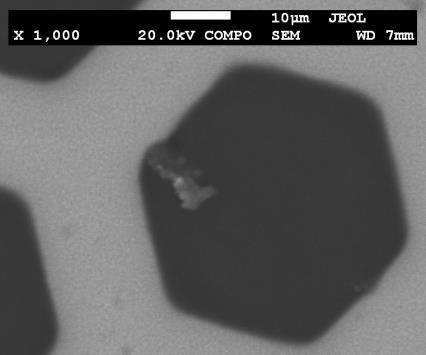


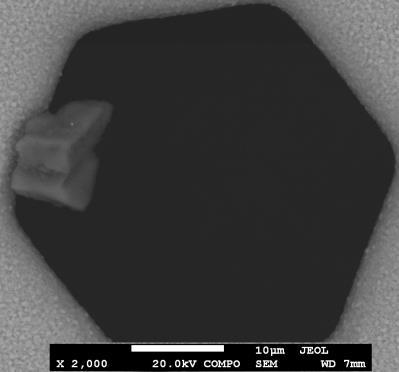
Figure 5: SEM photomicrographs of airborne particles at SXNU campus site. (A) Ca presence in airborne particle. (B) S, Cl and K rich airborne particle. (C) Ag rich airborne particle. (D) An airborne particle contains Al (Al2O3), Si (SiO2), S (FeS2), Ca and Fe. (F) An aerosol particle comprised of Mg (MgO), Al (Al2O3), Si (SiO2), S (FeS2), and Fe. (G) Ti rich airborne particle. (H) Cu rich airborne particle.
3.4. Elements sources and damages analysis
The main heavy metals in PM2.5 that have been identified to date are: copper, cadmium, chromium, iron, mercury, manganese, nickel, lead, palladium and zinc. PM2.5 has small particle sizes and the specific surface area is big, making it easy to adsorb toxic substances, which has a stimulating effect on the human respiratory system (6-7). PM2.5 contains bacterial microorganisms, viruses, carcinogens, etc, and can travel into the lungs with the human respiratory system,
International Journal of Healthcare Sciences ISSN 2348-5728 (Online)
Vol. 8, Issue 1, pp: (79-85), Month: April 2020 - September 2020, Available at: www.researchpublish.com
causing serious harm to human health. At the same time, the particles inhaled by the human body can be deposited in the respiratory tract, alveoli, as well as other parts, and induce disease. Heavy metals contained in airborne particles can invade the human body under breathing action (7-8). Copper, iron and nickel have been detected in this experiment. The direct source of Ca is lime and cement, which is also called construction site dust. Ca may also come from secondary dust on the road and from the friction between the tires and the road surface of the primary mineral dust: CaCO3, MgCO3, (Ca, Mg) (CO3)2. For the urban atmospheric environment, the source of iron-rich particles is more complex. The production activities around the city include coal mining, mining, metallurgy, and steelmaking, which are important sources of ironrich particles in the atmosphere (9). Brake systems and tire and abrasion of the roads are the main sources of Ti, Fe, and Cu in non-exhaust sources (10). Ag mainly comes from silver ore. Ore overexploitation will lead to increased concentration of Ag in the air. Excessive inhalation by the human body can cause respiratory infections, or even breathing difficulties. The common Fe element, if overdosed, can damage nucleic acids, protein in the cells (11). If the atmosphere contains a large amount of Ti and is inhaled by the human body, it can irritate the upper respiratory tract, causing coughing, chest tightness and pain. Inhaling too much Cu increases the risk of pneumoconiosis (12).
4. RESULTSAND DISCUSSION
Since light elements, such as C, N and O, were not included, some important particle types, such as soot, organic carbon and particles of biological origin, could not be identified (14).
Starting characterization of aerosol particles in a completely new geographical area, a suitable and important measurement parameter is the aerosol particle number size distribution. This can be used to indirectly infer climate and health effects of the particles.
Coal burning results’ particles contain mainly Si, S and Ca, but also minor amounts of Mg, Al, K, Fe, as well as some other elements.
Combustion of fossil fuels is the main anthropogenic source of trace metals, such as Fe, Cu, and Zn, in Linfen urban air. Exhaust emissions from both gasoline and diesel fuelled road vehicles also contain variable quantities of Fe, Cu and Zn. A source of Zn can also come from tire rubber abrasion from road vehicles. The size distribution of atmospheric particles found within which trace metals are important, since this not only influences the toxicity of a metal when inhaled, but also controls, to some extent, which metals may be dispersed via atmospheric transportation and deposition of rates of deposition of metals to the Earth’s surface.
5. CONCLUSIONS
In the air quality directive (2008/EC/50), the EU has set two limit values for particulate matter (PM10) for the protection of human health: the PM10 daily mean value may not exceed 50 micrograms per cubic meter (µg/m3) more than 35 times in a year, and the PM10 annual mean value may not exceed 40 micrograms per cubic meter (µg/m3) (13).
Our study shows the particulate matter (PM10) in Linfen air is much higher than this limit. Our results show about 15 times this value on the most polluted days in the city of Linfen. They also show twice the accepted value when the city is considered clean.
ACKNOWLEDGEMENTS
We would like to thank all the staff of the Electron Microscopy Unit at Key laboratory at Shanxi Normal University. In particular, we thank Dr. Yang Ruilin. We also thank staff at Key laboratory, Chemistry group, Zhao Ye and Zhang Shijie.
REFERENCES
[1] Luo Yun Fen, Zhou Xiu Ji, Li Wei Liang. Research status of atmospheric aerosol radiation forcing and climate effect [J].Advances in Earth Science, 1998, 13(6):572-581.
[2] Breon,F. M., Tanre, D., Generoso, S. Aerosol Effect on Cloud Droplet Size Monitored from Satellite [J]. Science, 2002, 295: 834-838.
[3] DeMott, P. J., Sassen, K., Poellot,M. R., Baumgardner, D., Rogers, D.C., Brooks
[4] https://www.baidu.com (Linfen, SXNU, South Gate)
International Journal of Healthcare Sciences ISSN 2348-5728 (Online)
Vol. 8, Issue 1, pp: (79-85), Month: April 2020 - September 2020, Available at: www.researchpublish.com
[5] Rev Diagnosis of respiratory disease by measurement of airborne nano-particles (Licentiate thesis Jonas Karl Fredrik Jakobsson) kappa.
[6] Xu Jianfei, Wang Hua, Fu Lei, Shangbo, The Atmospheric Characteristics Study of PM2.5 Mass Concentration in Changchun City[J]. Ji lin Meteorological, 2013 (01): 32-33.
[7] Yang Min, Ding Ruiqiang, Wang Gong, etc. The characteristics of atmospheric aerosols in Lanzhou City and their effects on respiratory diseases. Drought weather, 2005, 23(1): 54-57.
[8] Burnete R. T., Camak S., Brook J. R., et al. The role of particulate size and chemistry in the association between summertime ambient air pollution and hospitalization for cardio respiratory disease [J]. Environmental Heath Perspectives, 1997, 105 (6): 614-620.
[9] Ro C. U., Kim H., Oh K. Y., et al. Single-particle characterization of urban aerosol particles collected in three Korean cites using low-Z electron probe X-ray microanalysis [J]. Environmental Science & Technology, 2002, 36. (22): 4770-4776
[10] Kwak J. H., Kim H., Lee J., et al. Characterization of non-exhaust coarse and fine particles from on-road driving and laboratory measurements. [J]. Science of the Total Environment, 2013, 458–460 (3):273-282.
[11] Nagpure A. S., Gurjar B. R., Kumar V., et al. Estimation of exhaust and non-exhaust gaseous, particulate matter and air toxics emissions from on-road vehicles in Delhi [J]. Atmospheric Environment, 2016, 127:118-124.
[12] Abu-Allaban M., Gillies J. A., Gertler A. W., et al. Tailpipe, re-suspended road dust, and brake-wear emission factors from on-road vehicles [J].Atmospheric Environment, 2003, 37(37):5283-5293.
[13] https://ec.europa.eu/environment/air/quality/standards.htm
[14] Science of the Total Environment 343 (2005) 261–272
